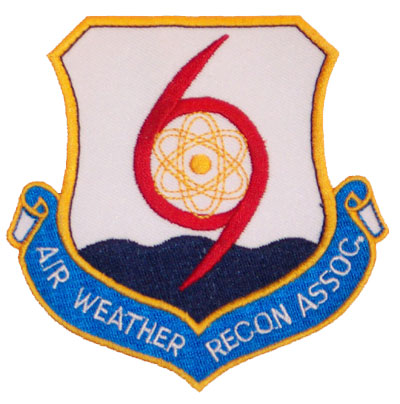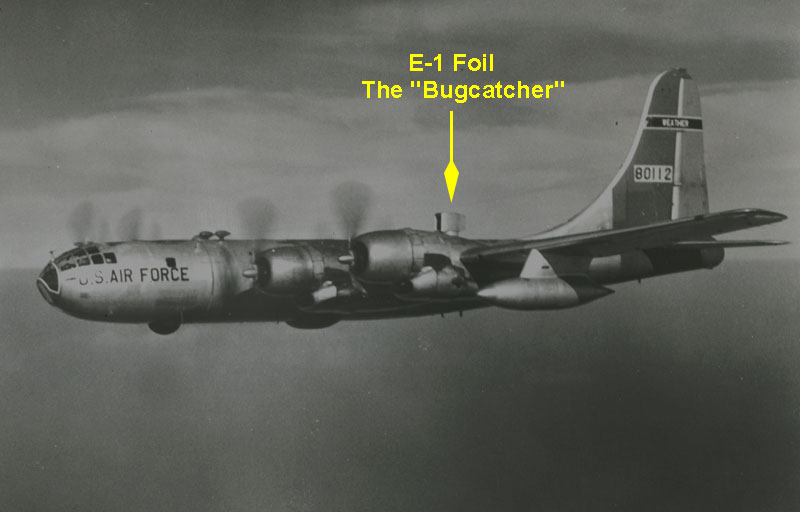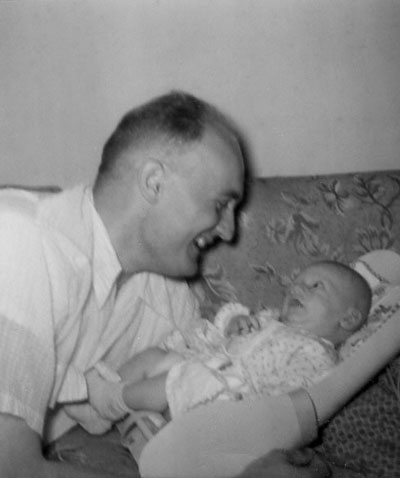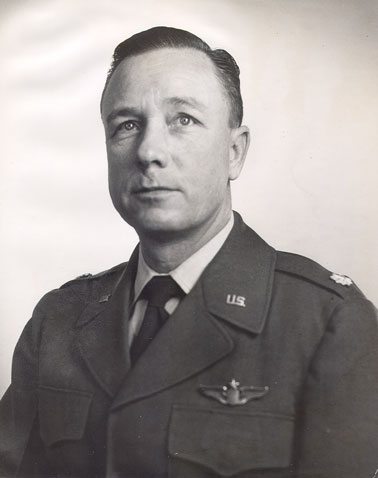
 |
REMEMBERING THE CREW OF "THE GOLDEN
HEART"
|
 |
WB-50D
flown by Air Weather Service 1956- 1965 Official Air Force photograph, courtesy of Air Force Weather History Office Annotation added by author |
| Sometime on 30
August 1956, the 58th was tasked to fly a third operational sortie on
the 31st. This mission, designated a "Loon Special", would take
off about 2:00 A.M. local time and head south over Anchorage before
going out into the Gulf of Alaska. The mission would then fly west to
parallel to the
Aleutian Islands. They would return at a second altitude
along the same track. As originally drawn up, the track would
take almost 15 hours to complete. Coordinating with the mission
customer, the 58th operations planners managed to shorten the track
to a planned 12 hour mission. The 58th WRS was working with a minimum number of crews in August 1956. Many people had left the squadron during the summer rotation period and the newcomers required training in the WB-50. After looking over the schedule, the squadron operations folks decided to use a crew that had previously been identified to back up the regular missions on the 31st. This crew consisted of: Capt Leonard N. Chapman, Jr., Aircraft Commander Maj Dale Richardson, Co-Pilot Capt Everett E. Dyson, Navigator 2Lt William W. Faustlin, Navigator 1Lt William J. Wolters, Jr., Weather Observer MSgt Fred T. Gregg, Jr., Flight Engineer TSgt Richard K. Brown, Auxiliary Crew Member SSgt Ronald R. Ragland, Dropsonde Operator A2C Melvin O. Lindsey, Radio Operator A2C Elijah Spencer, Radio Operator A3C Douglas W. Maxon, Crew Chief The 58th routinely carried two navigators and two radio operators on all of their missions. The demands of arctic navigation and communication demanded the additional help. TSgt Brown was listed on the crew orders as an Auxiliary Crew Member. He was a Special Equipment Operator (SEO), belonging to a unit known as Team 202, which was part of the 1009th Special Weapons Squadron. An SEO did not go on all 58th missions, but were often along on the special taskings to help identify if the actual debris cloud was found. In 1959 the 1009th SWS administratively morphed into the Air Force Technical Applications Center, or AFTAC. A generation of air sampling crews simply knew AFTAC as "the customer". According to the 58th WRS History for July-December 1956, the "Golden Heart" took off as scheduled shortly after 2:00 A.M. All proceeded normally for about an hour. Regular radio calls indicated no trouble. A radar station in Anchorage saw the aircraft until about 3:08 A.M. when it suddenly disappeared. Shortly after this, Air Traffic Control attempted to contact the aircraft with no success. The Alaskan Air Rescue Center was notified and a search was begun at daylight. Shortly before 9:00 A.M., the crash site was located on a group of small islands in the Susitna River, very near where it had disappeared from radar. Subsequent investigation showed that the "Golden Heart" had crashed nose first, in a near vertical attitude. Most of the plane was destroyed by the crash and subsequent fire. All that remained intact was a section of the aft fuselage and tail that broke off on impact. Despite a full investigation, no cause for this crash was ever determined. It took several days to locate and identify remains of all 11 of the crewmembers. Initially, two crewmembers were listed as missing. This only added to the grief felt by their families and the whole squadron. Because the accident happened overseas (remember Alaska wasn't even a state yet) the families were quickly processed to return to the Zone of the Interior, as the lower 48 states were known. Three of the families elected to have their loved ones interred at Arlington National Cemetery, and their flag-draped coffins arrived together by train weeks later. After fifty years, these three families have made contact with each other and set out to honor the service and sacrifice of the crew of the "Golden Heart". |
 |
 |
| Family
photo, property of Doug Wolters Any reproduction, or other use, is prohibited without the express written permission of the Wolters Family |
Photo
property of Richardson Family Any reproduction, or other use, is prohibited without the express written permission of the Richardson Family |
1st Lt William J. Wolters, Jr. is shown with his very young son Doug in August of 1956. Doug Wolters' recent pilgrimage to the actual crash site is documented on the following page. |
Major Dale Richardson's official photo from 1956. His daughter, Andrea, was only 8 years old at the time of the crash of the Golden Heart. She is currently writing a book about her father's life and times. |
 |
Official
Air Force photograph, courtesy of Air
Force Weather History Office
Photo cropped from the original for use on this web page |
A2C Melvin O.
Lindsey (left) as part of 1Lt D. N. Rogers' crew receiving "Crew of the
Month"
honors from Brig Gen Thomas S. Moorman, Commander, Air Weather Service (right). In this 1955 photo Airman Lindsey was still an A3C. Also pictured are A1C E. B. Tingle and SSgt A. Figueroa. Note the aircrew are wearing arctic mukluk boots with their service uniforms. |
| To illustrate
the tight operational constraints that the 58th was experiencing during
the conversion from the WB-29 to the WB-50, Air Weather Service
immediately dispatched an additional aircraft and two crews to augment
the squadron after the loss of 49-315. One crew came from the
55th WRS at McClellan AFB, CA, and the second from the 57th WRS at
Hickam AFB, HI. |
Continue to Page Three